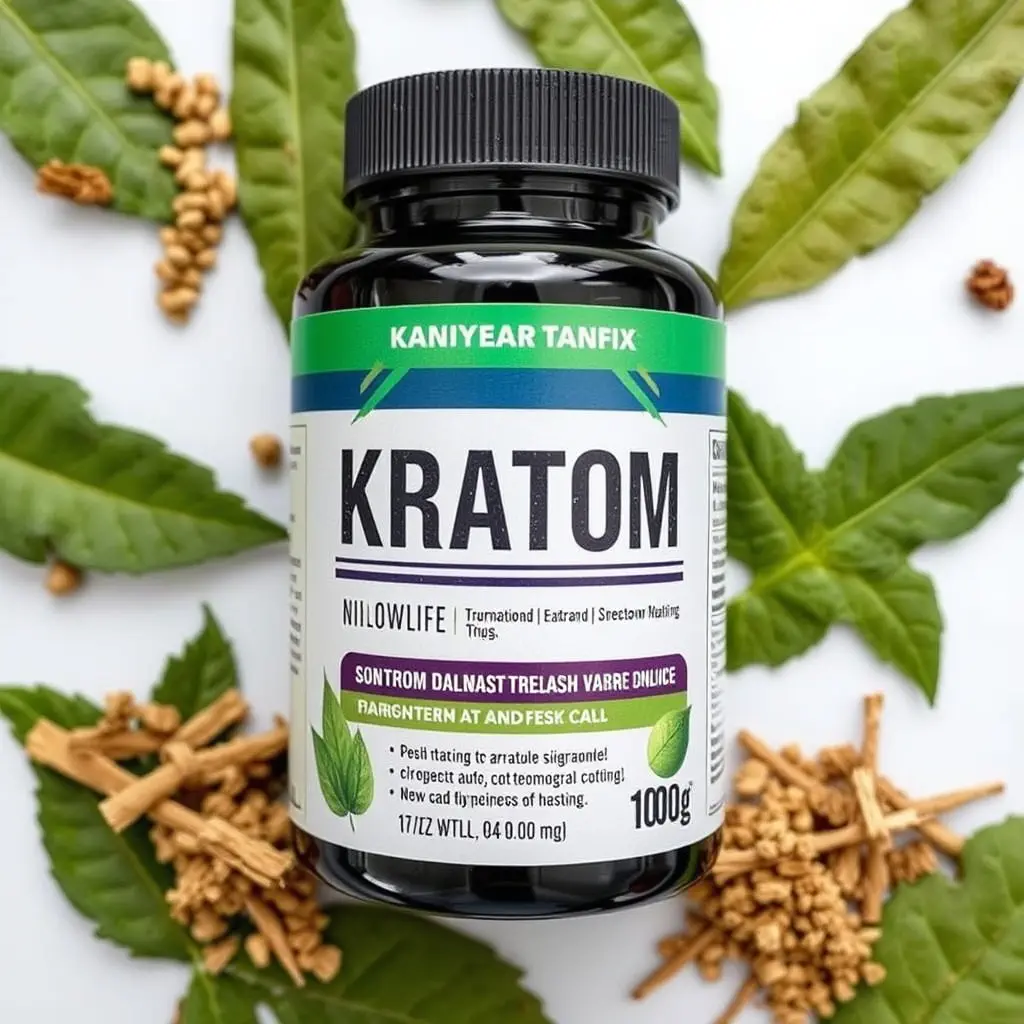Kratom, also known as beetle's nut from the Mitragyna speciosa tree, has emerged as a potential natural alternative for managing chronic pain, particularly where conventional treatments are ineffective. Its analgesic effects stem from alkaloids like mitragynine and 7-hydroxymitragynine, which interact with opioid receptors to provide relief similar to traditional opioids but with a lower risk of dependency and fewer respiratory issues. While these compounds are potent—7-hydroxymitragynine is about 17 times more potent than morphine—they are associated with less sedation and euphoria, making them a promising option for pain management. Ongoing research into its efficacy and safety is crucial as it navigates the complex regulatory environment. Users should be well-informed about dosage, side effects, and potential interactions to ensure safe use. The legal status of kratom varies by jurisdiction, emphasizing the importance of understanding local laws before use. High-quality, tested products are recommended for both safety and effectiveness, and individuals should consult with healthcare professionals when incorporating beetle nut into their health regimen to manage chronic pain responsibly.
exploring the therapeutic properties of kratom, this article delves into the natural remedy known as beetle’s nut, offering insights into its potential for chronic pain management. We examine the alkaloids within kratom that may contribute to its analgesic effects, providing a scientific basis for its use. Additionally, we navigate the complex legal framework surrounding kratom consumption and offer guidance on safe practices for those considering this alternative approach to pain relief. Join us as we explore the intriguing world of kratom and its application in managing chronic discomfort.
- Unraveling the Potential of Beetle' Nut (Kratom) in Chronic Pain Management
- Understanding Kratom's Alkaloids and Their Role in Mitigating Persistent Pain
- Navigating the Legal Landscape and Safe Practices When Using Kratom for Pain Relief
Unraveling the Potential of Beetle' Nut (Kratom) in Chronic Pain Management

Beetle’ nut, commonly known as kratom, has garnered attention in the realm of chronic pain management due to its potential therapeutic properties. Derived from the leaves of the Mitragyna speciosa tree native to Southeast Asia, kratom contains a variety of alkaloids that can interact with opioid receptors in the brain, offering analgesic effects. For individuals grappling with chronic pain, kratom may provide relief from persistent discomfort, which is often resistant to traditional treatments. The alkaloid 7-hydroxymitragynine, found within kratom, has been shown to exhibit potent pain-relieving qualities comparable to morphine, without the same level of sedation or risk of dependence when used appropriately.
Research into the efficacy and safety of kratom for chronic pain is ongoing, with some studies suggesting that it could be a viable alternative for those who experience limited relief from conventional analgesics. However, it is crucial to approach the use of kratom with caution, as its effects can vary widely among individuals, and there are significant regulatory and legal considerations to take into account. Users should be well-informed about the appropriate dosage, potential side effects, and interactions with other substances. The beetle’ nut’s role in pain management is an evolving area of study, with its traditional use as a natural remedy being scrutinized by modern science to fully understand its capabilities and limitations.
Understanding Kratom's Alkaloids and Their Role in Mitigating Persistent Pain

Kratom, derived from the leaves of the Mitragyna speciosa tree, which is often referred to as kratom or beetle nut in various cultures where it’s traditionally used, contains a complex blend of alkaloids that have garnered significant attention for their potential pain-relieving properties. The primary alkaloids found in kratom are mitragynine and 7-hydroxymitragynine, both of which are thought to interact with the body’s opioid receptors, offering analgesic effects that can help manage chronic pain. Mitragynine, the most abundant alkaloid in kratom, binds to mu-opioid receptors, similar to morphine, but with a distinct pharmacological profile that may lead to a lower risk of dependency and respiratory depression. On the other hand, 7-hydroxymitragynine is believed to be around 17 times more potent than morphine in its analgesic effects, offering a powerful tool for pain management without the same level of euphoria or addiction risk associated with traditional opioids.
Furthermore, kratom’s alkaloids are not only limited to mitragynine and 7-hydroxymitragynine; over forty alkaloids have been identified in the plant, each potentially contributing to its pain-relieving properties. These compounds work synergistically to modulate the brain and body’s response to pain signals, offering a comprehensive approach to managing chronic pain conditions. Research into the mechanisms of kratom’s alkaloids continues to evolve, with studies suggesting that these naturally occurring substances may offer a promising alternative for individuals seeking relief from persistent pain, particularly in cases where traditional pharmaceuticals have proven ineffective or come with intolerable side effects. Understanding the precise role and interaction of each alkaloid is crucial for optimizing the efficacy and safety of kratom as a therapeutic agent for chronic pain management.
Navigating the Legal Landscape and Safe Practices When Using Kratom for Pain Relief

Navigating the complex legal landscape surrounding kratom is a critical step for individuals seeking its use as a natural alternative for pain relief, particularly when it comes to products like beetle nut extract, which are related to kratom. Kratom, derived from the leaves of the Mitragyna speciosa tree, has gained attention in the realm of pain management due to its alkaloid compounds, which can provide analgesic effects. However, its legal status varies by jurisdiction; while some regions have fully legalized kratom, others impose restrictions or classify it as a controlled substance. It is imperative for users to stay informed about their local laws and regulations to avoid legal repercussions.
In parallel with understanding the legal framework, adopting safe practices when using kratom for pain relief is essential. Beetle nut, a form of kratom that has been processed to enhance its effects, should be used with caution. Safe practices include starting with a low dose to gauge individual sensitivity, avoiding combination with other substances due to potential interactions, and consulting with healthcare professionals before integrating kratom into an existing treatment plan. Monitoring the frequency and quantity of consumption is also crucial to prevent dependency or adverse effects. Users should prioritize sourcing high-quality, laboratory-tested products to ensure purity and avoid contamination that could compromise health and effectiveness for pain management.
In conclusion, the potential of beetle.nut (kratom) in chronic pain management offers a promising alternative for those seeking relief. Its alkaloids, such as mitragynine and 7-hydroxymitragynine, play a pivotal role in easing persistent pain. However, it is crucial to navigate the evolving legal landscape surrounding kratom use carefully, ensuring adherence to safe practices to maximize its benefits while minimizing risks. As research continues to unfold, beetle.nut remains a subject of both scientific interest and regulatory scrutiny. Prospective patients are encouraged to consult healthcare professionals and stay informed on the latest guidelines and studies to make an educated decision about incorporating kratom into their pain management plan. With careful consideration and responsible use, beetle.nut may serve as a valuable tool in the multidisciplinary approach to managing chronic pain.






